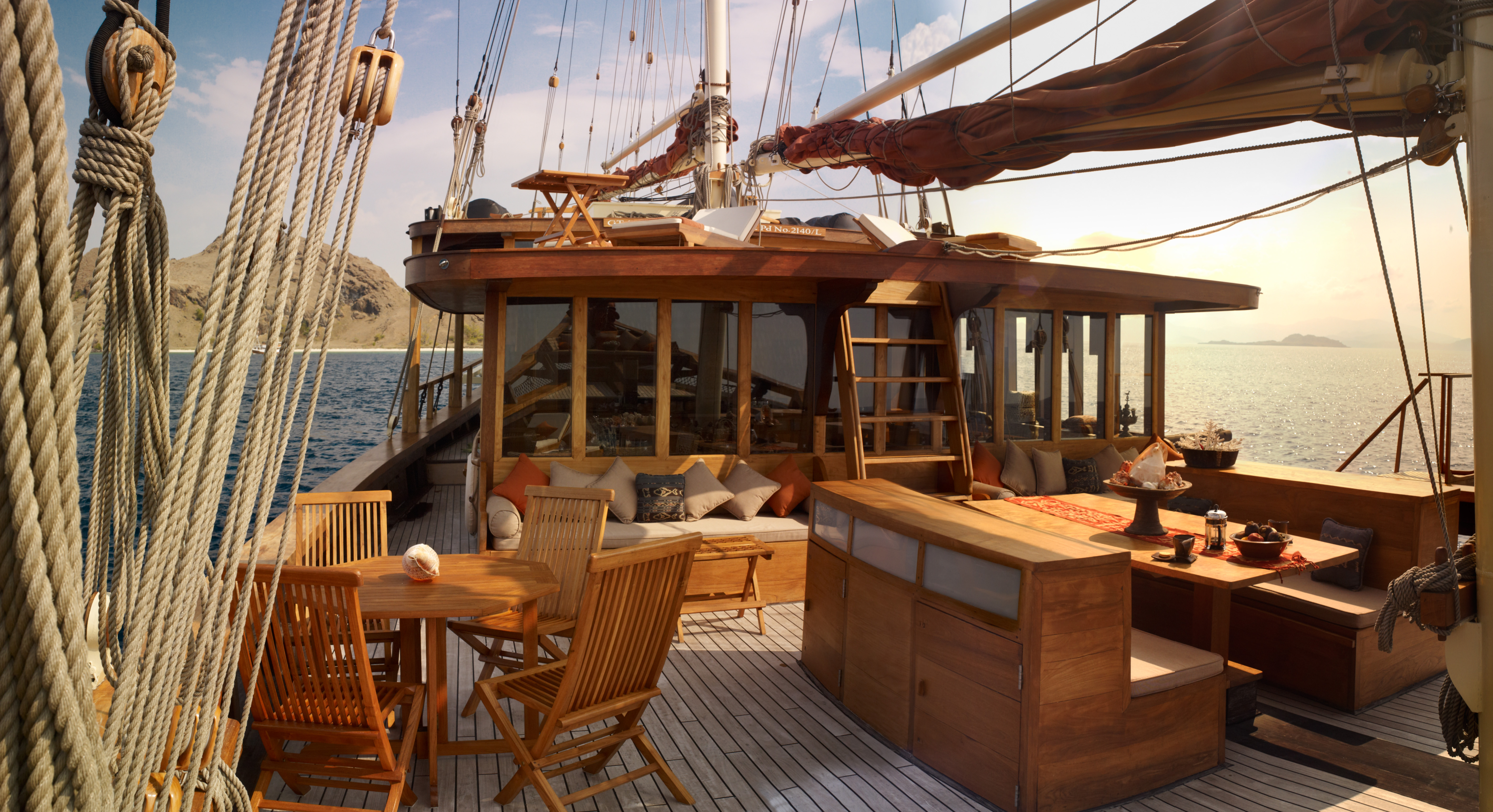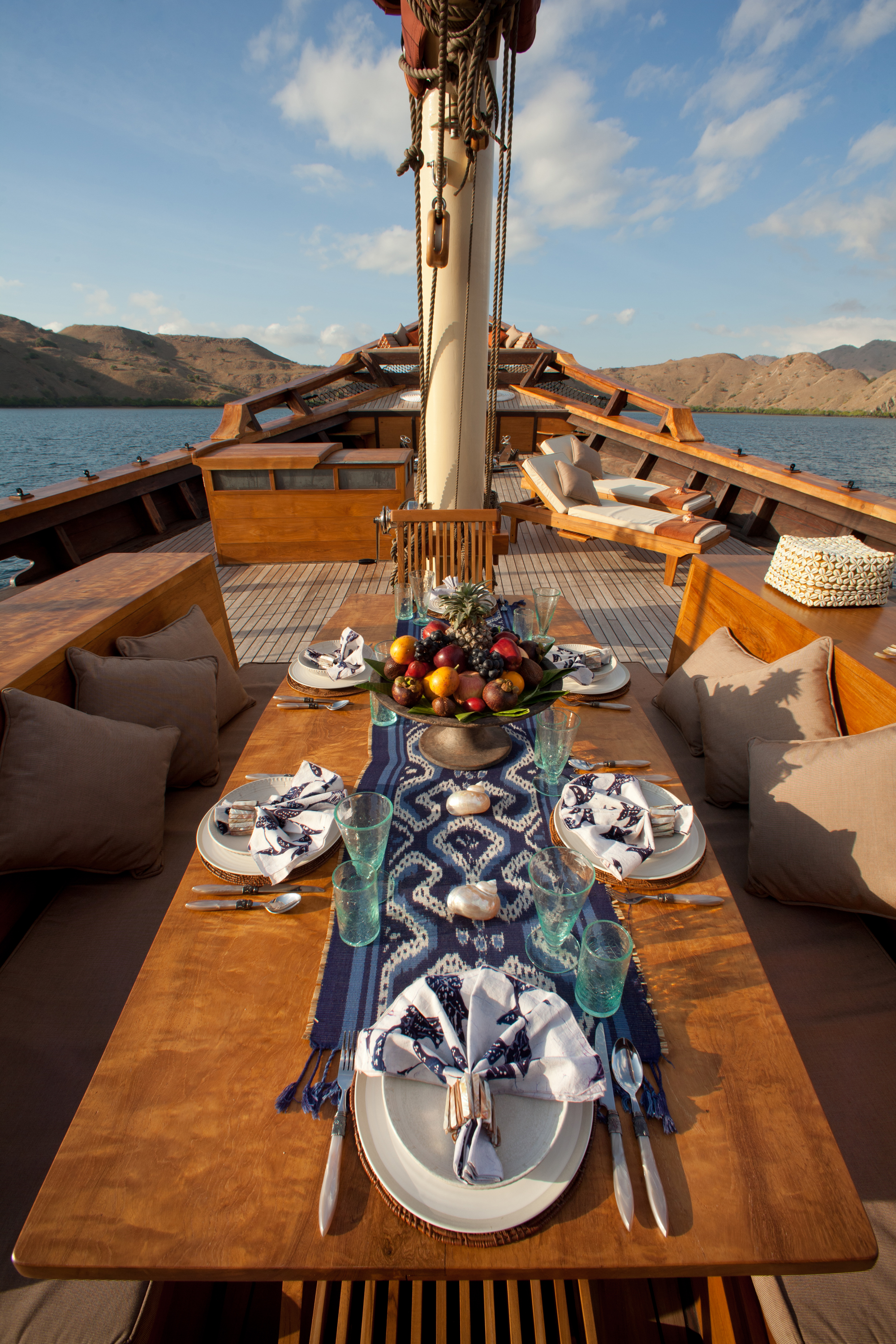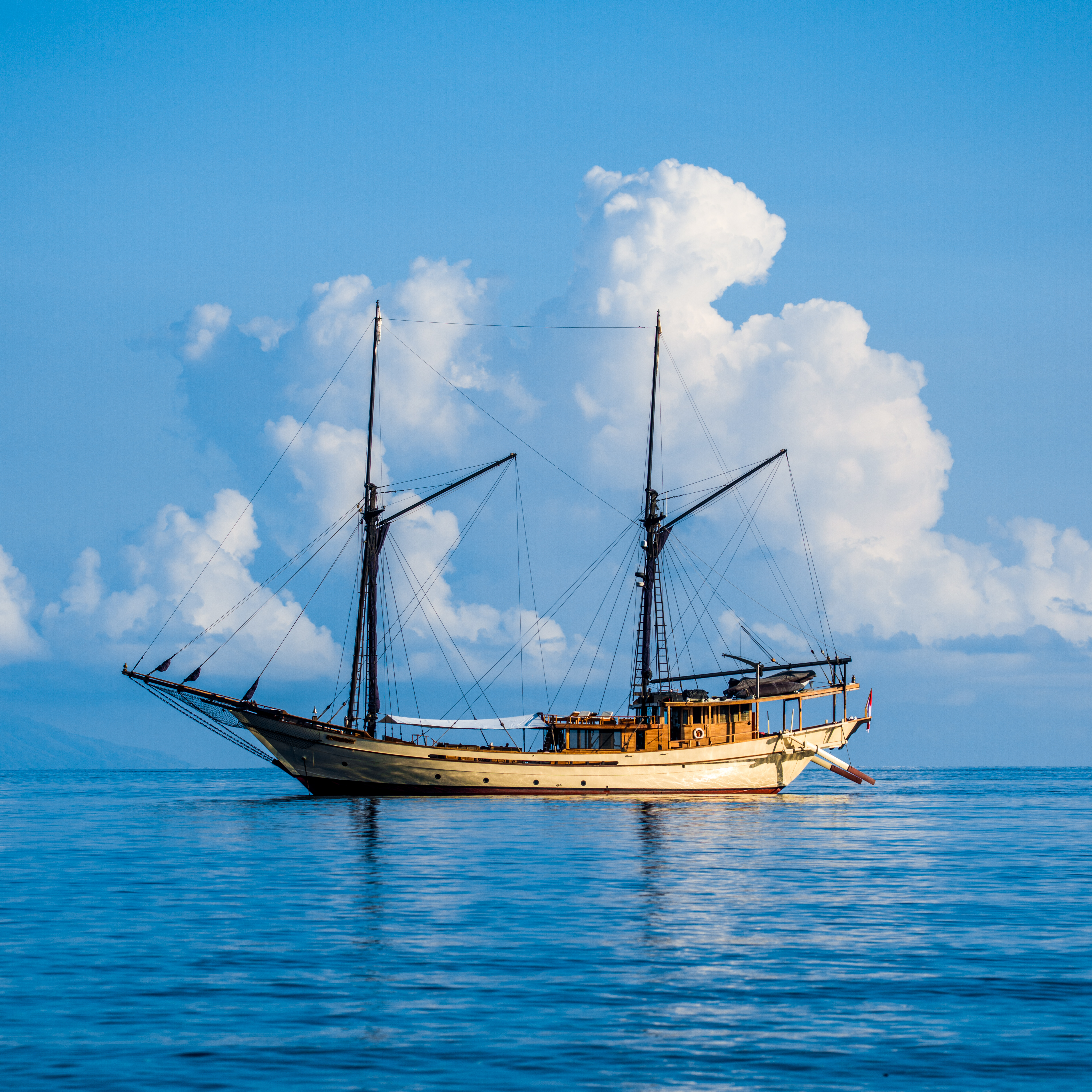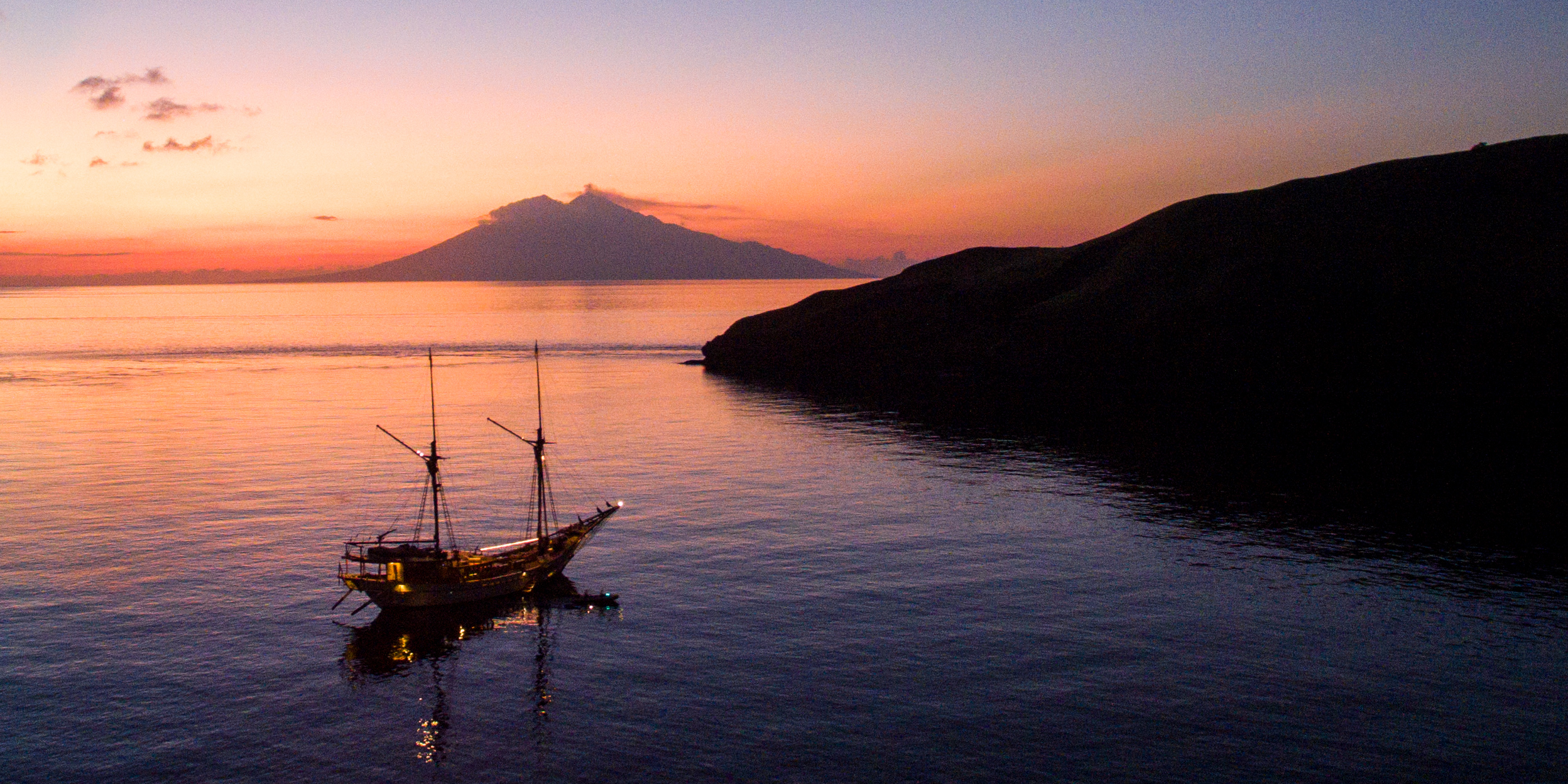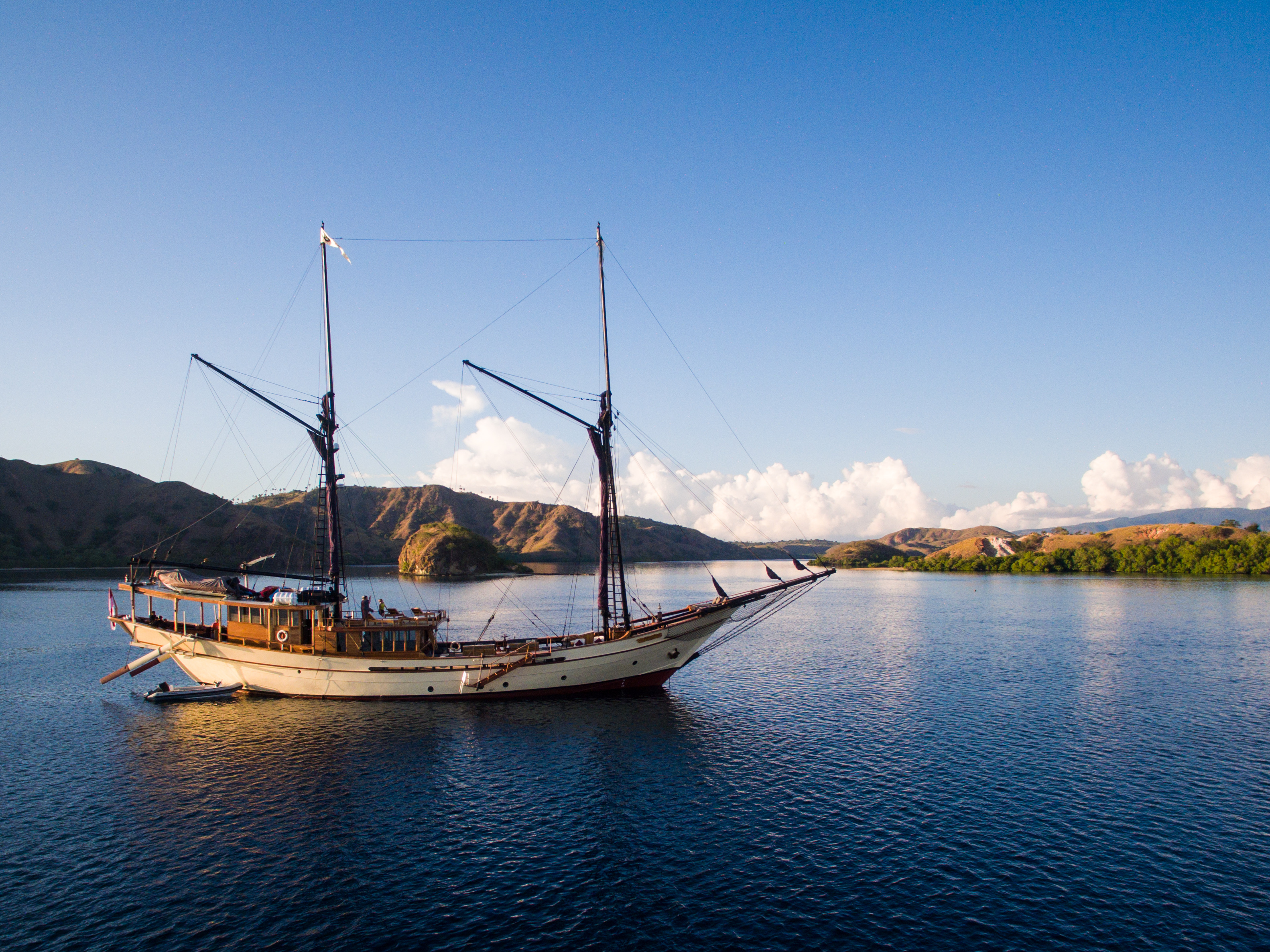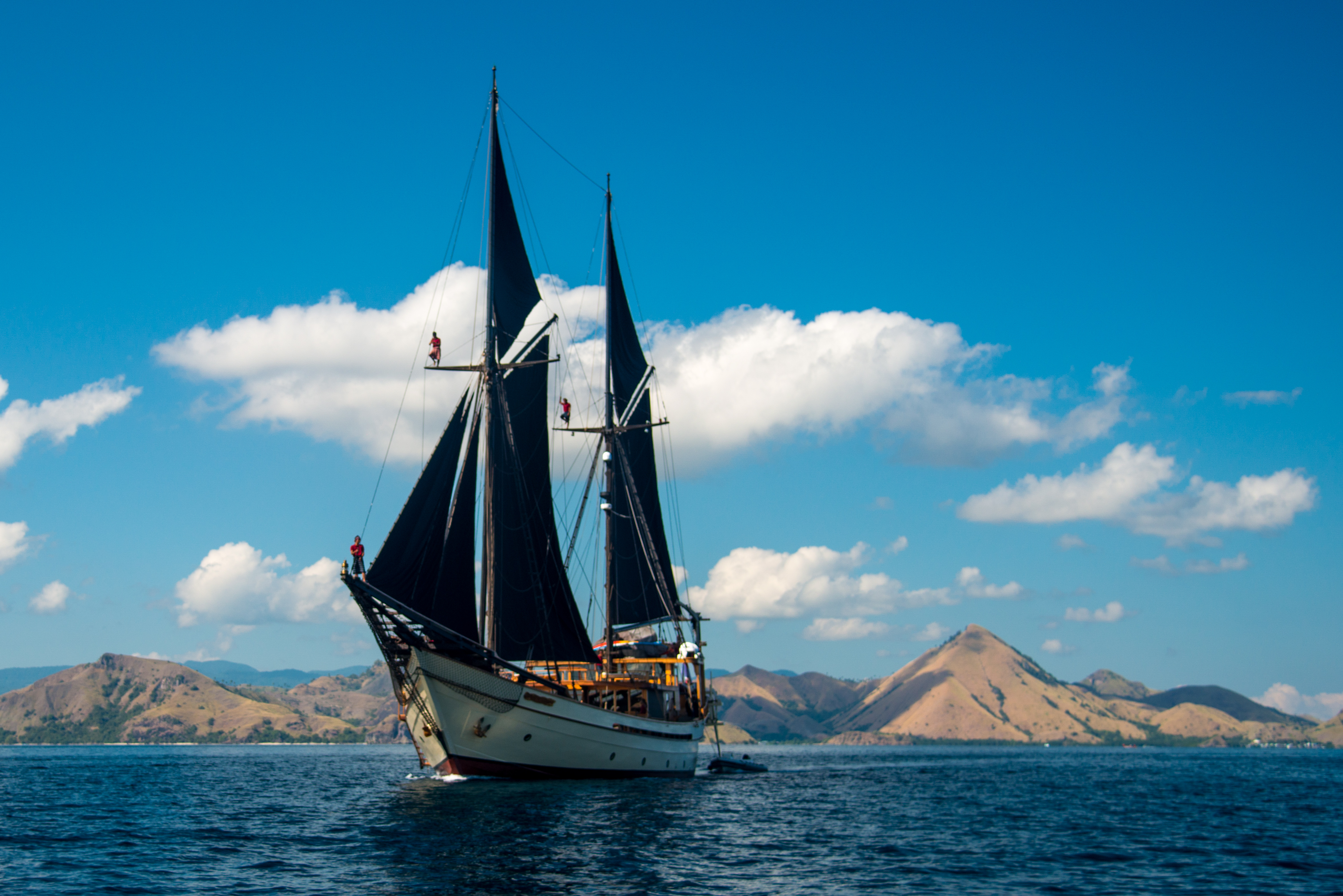The Phinisi Builders of Ara Village: Guardians of an Ancient Craft
The Village Where Time Builds Ships
On a quiet morning in South Sulawesi, the air smells of sawdust and sea. In the distance, men balance barefoot on great planks of ulin—ironwood—bending and shaping the future into being. This is Ara Village, home to the legendary Konjo boatbuilders, whose skill has shaped the spirit of Indonesia’s maritime world for centuries.
Each hammer strike, each prayer whispered over the timber, is a continuation of an ancient story—one that still unfolds in the twin villages of Ara and Tanah Beru, where tradition and the ocean are inseparable.
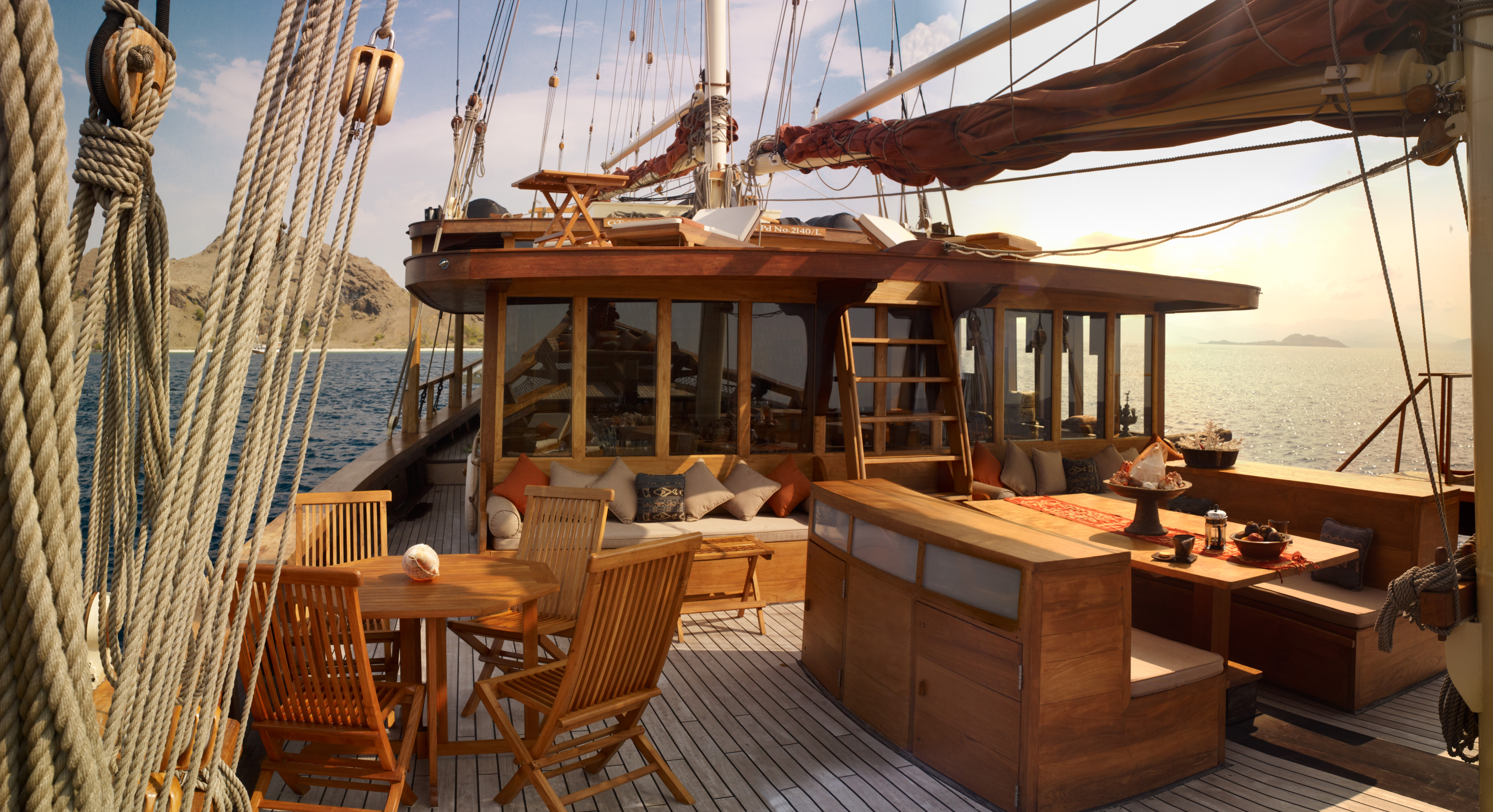
Where Phinisi Yachts Are Born
If you’ve ever admired the silhouette of a Phinisi yacht gliding across the horizon, you’ve already witnessed the soul of Bulukumba. The Phinisi—Indonesia’s most iconic sailing vessel—is built here, in the hands of the Konjo, a sub-ethnic group of the Bugis-Makassar people.
These artisans work without formal blueprints or machines. Their “plans” exist within memory and muscle—an embodied form of engineering refined over generations. As maritime anthropologist H. Tanaka (2021) notes in Oceanic Anthropology Review, “Traditional Sulawesi boatbuilding represents an architectural language written not on paper, but in the body and spirit of the maker.”
In Ara, the Phinisi is more than a ship; it is a living vessel born from heritage, intuition, and the sea’s will.
The Konjo Legacy: Masters of Memory
The Konjo have long been recognized as Indonesia’s most revered wooden shipbuilders. Their boats once carried the archipelago’s traders along the Spice Route, navigating without modern maps or compasses. Today, they continue to build vessels that merge form and function with an artistry unmatched in the modern world.
When Patti Seery, founder of Silolona Sojourns, first met the Konjo boatbuilders in Ara during the early 2000s, she found craftsmen who “built a boat inside their body.” They couldn’t visualize two-dimensional plans—but they could raise a perfect hull from raw logs in a mangrove swamp using intuition alone.
For Seery, that moment was transformative. The Konjo became not just the builders of Silolona, her first luxury Phinisi, but the custodians of a heritage she would help share with the world.
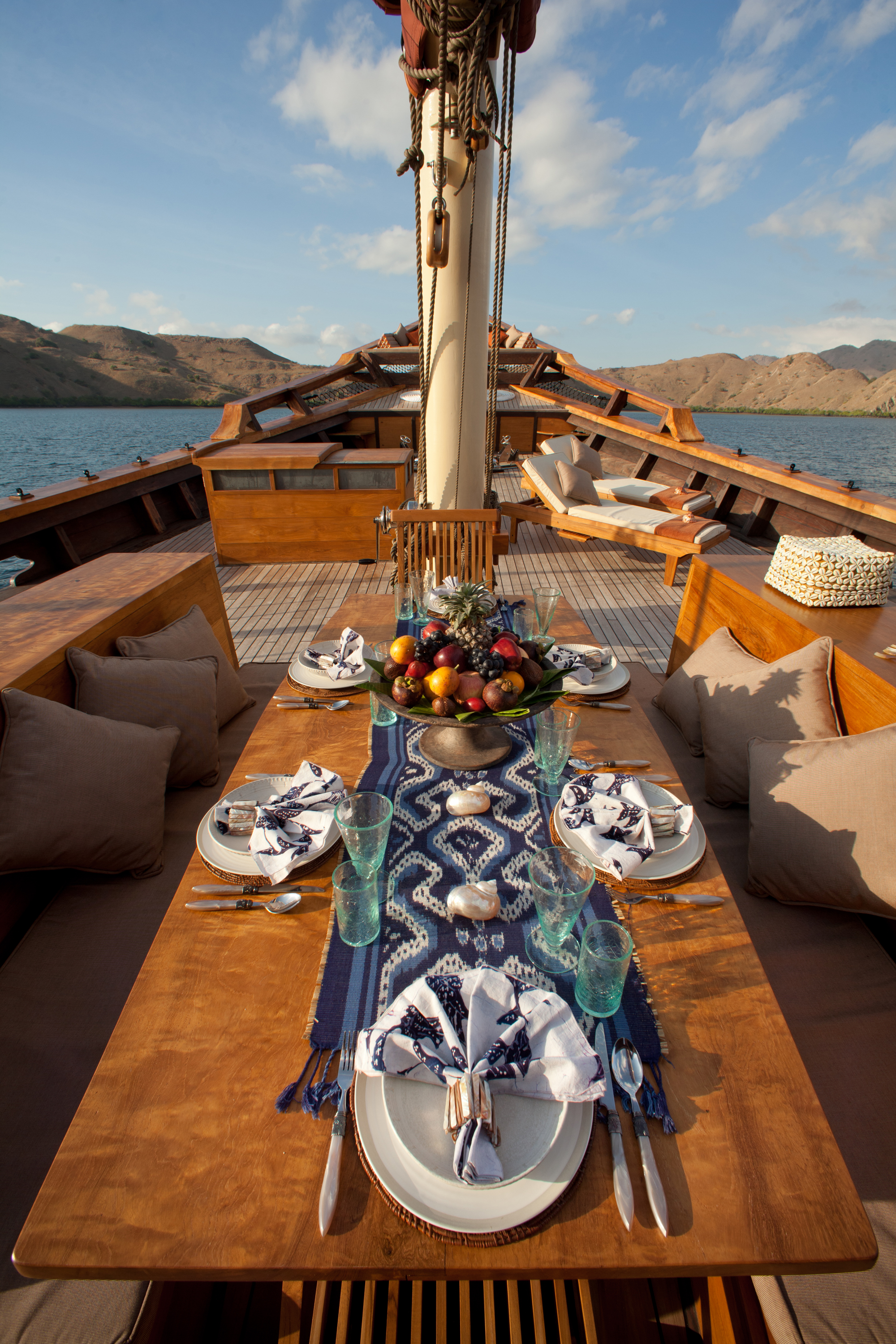
Apprenticeship by the Sea
Here, skill is not taught in schools—it is inherited. A boy becomes a builder by shadowing his father, learning how to listen to the timber’s tone, to see with his hands. Apprentices begin by carrying tools and sweeping the shipyard, slowly absorbing the rhythm of work until the craft becomes second nature.
No written manuals exist. The lineage flows orally, through gestures, through mistakes and corrections made under the watchful eyes of elders. “Each boat teaches its own lesson,” one builder tells Seery during Silolona’s construction. “You don’t just build her—you learn from her.”
A 2022 study in the Journal of Maritime Heritage and Culture found that this oral tradition sustains “one of the most complex systems of tacit engineering knowledge in the world” (Rahman et al., 2022).
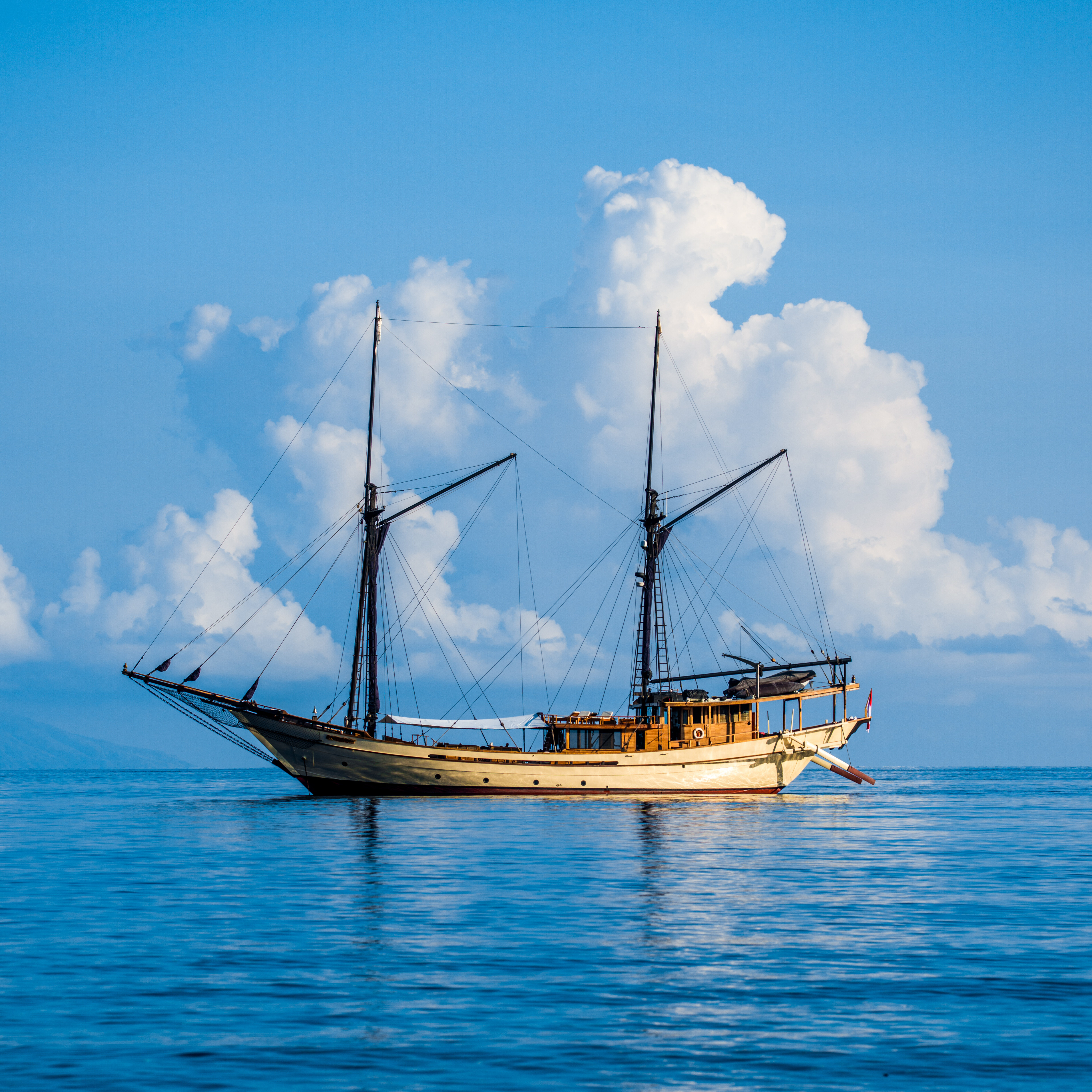
Rituals of Creation and Launch
Before the first log is carved, the Konjo elders perform a blessing ceremony known as maccera lopi—a sacred rite to honor the sea’s spirit and seek protection for the builders. Offerings of rice, betel leaves, and coconuts are laid at the keel. The master builder chants invocations in the Konjo language, asking permission from the forest and ocean to bring the vessel to life.
When construction is complete, the entire village gathers for the launching ceremony. Children sing, women weave garlands, and the community—shoulder to shoulder—pushes the massive hull into the sea.
It’s more than celebration—it’s resurrection. The vessel, once forest and earth, becomes part of the ocean once again. As Delgado (2020) writes in Ethnographic Studies of Maritime Southeast Asia, these ceremonies embody “the choreography of faith and craftsmanship, merging human labor with divine rhythm.”
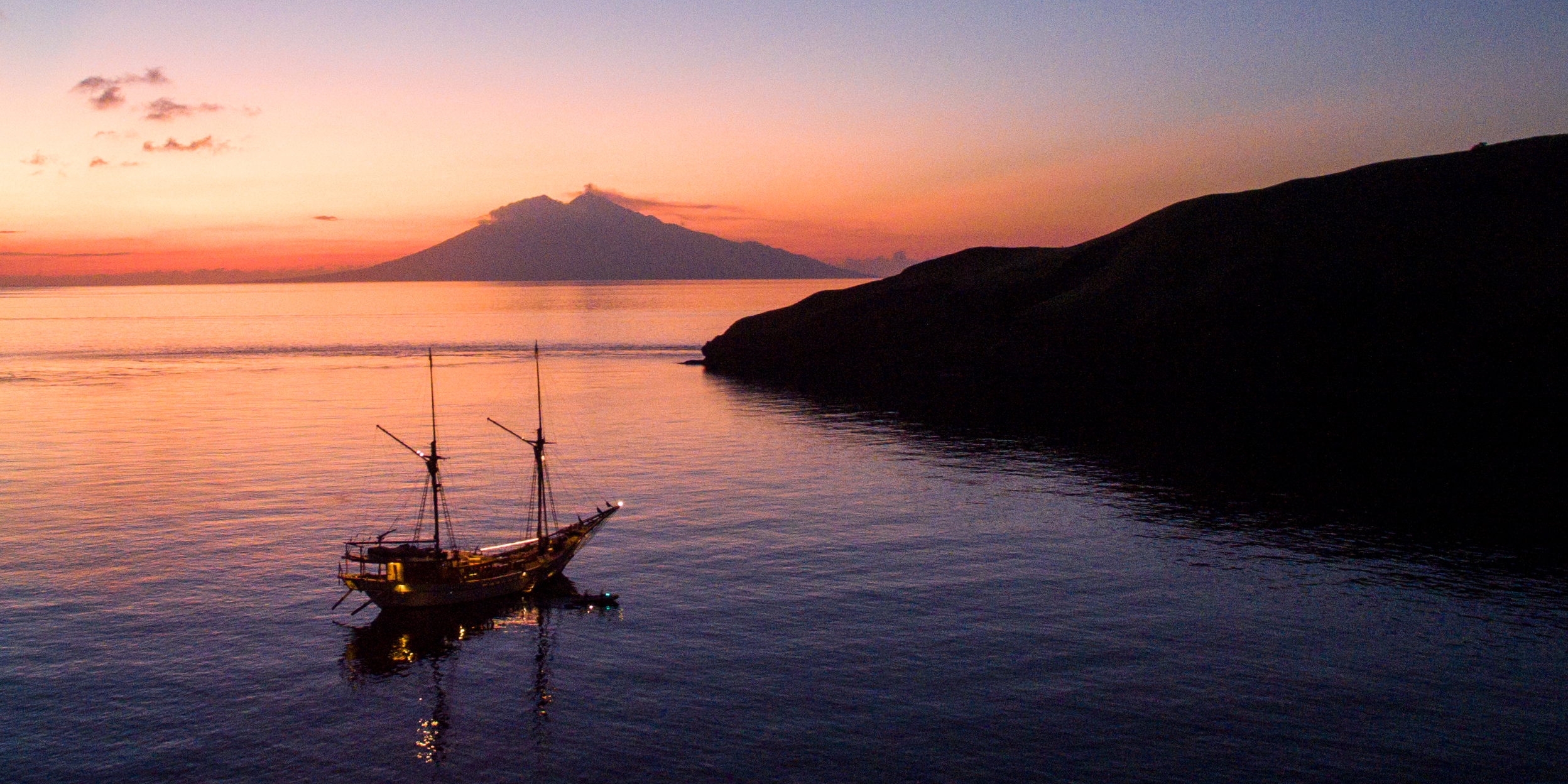
Beyond Luxury: Honoring the Hands That Built It
Every modern Phinisi owes its soul to the Konjo. Yet few luxury yachts acknowledge their makers’ humanity. This is where Silolona Sojourns stands apart. From the beginning, Seery’s vision wasn’t just to build a beautiful vessel—it was to build a bridge between ancient craft and contemporary exploration.
By documenting the stories of the Konjo and preserving their role at the heart of each voyage, Silolona ensures that every traveler who steps aboard experiences not just comfort, but connection.
Each polished deck plank, each curve of the bow, carries a history written by hands that have shaped Indonesia’s seas for centuries.
People Also Ask (PAA)
Where are Phinisi yachts built?
Phinisi yachts are handcrafted in Ara and Tanah Beru villages, South Sulawesi, Indonesia.
Who are the Konjo people?
The Konjo are an indigenous subgroup of the Bugis-Makassar ethnic group, famed for their centuries-old mastery in wooden shipbuilding.
How is Phinisi building passed down?
Through generations of apprenticeship, oral tradition, and community rituals that preserve both the technical and spiritual dimensions of the craft.
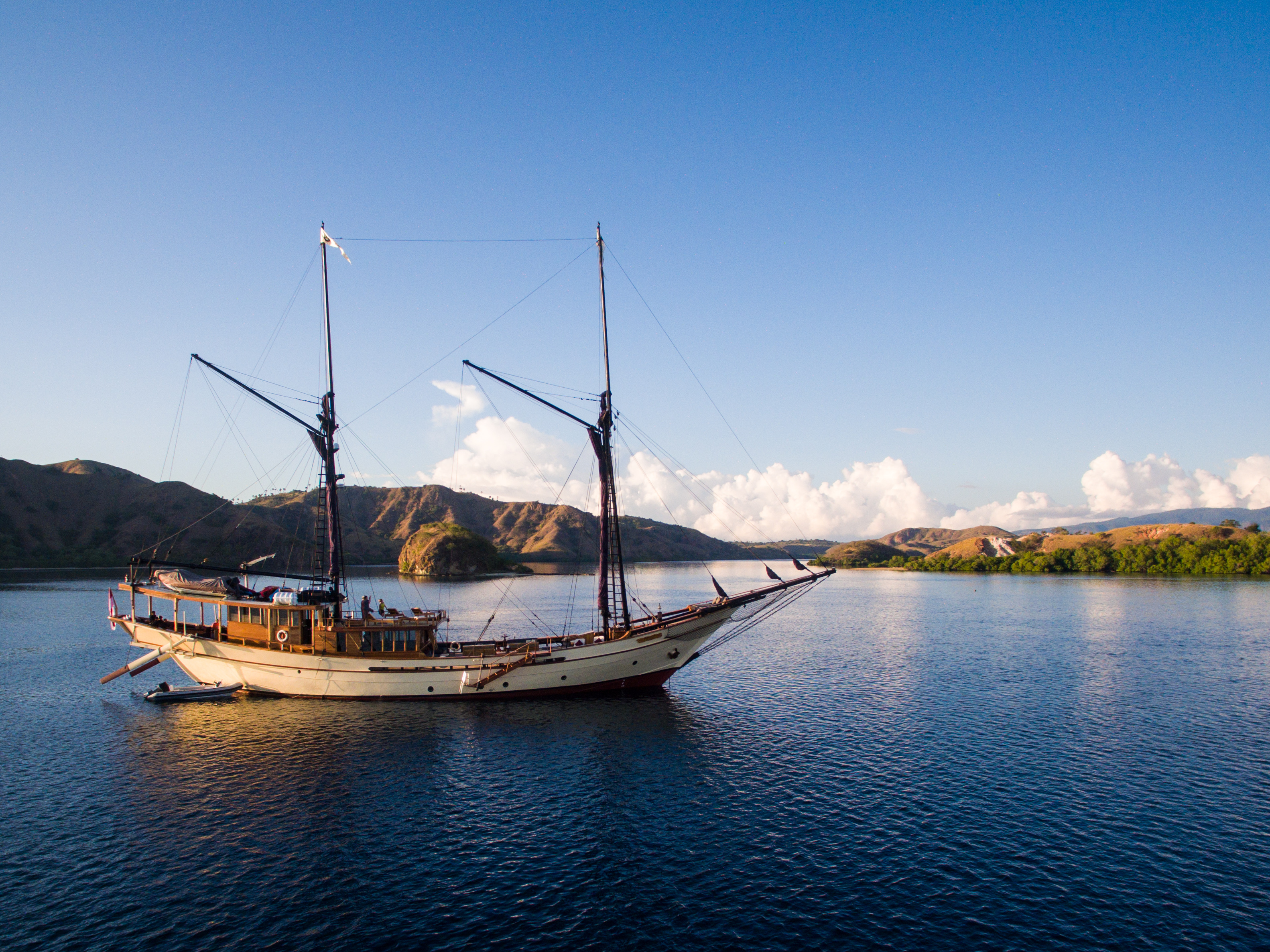
Sailing Into the Future
Today, as global luxury tourism evolves toward cultural authenticity, Silolona continues to lead by example—supporting indigenous craftsmanship, empowering local builders, and sharing the untold stories of Ara and Tanah Beru.
To sail aboard a Silolona Phinisi is to become part of that lineage—a guest in a living tradition that still breathes along the coast of Sulawesi.
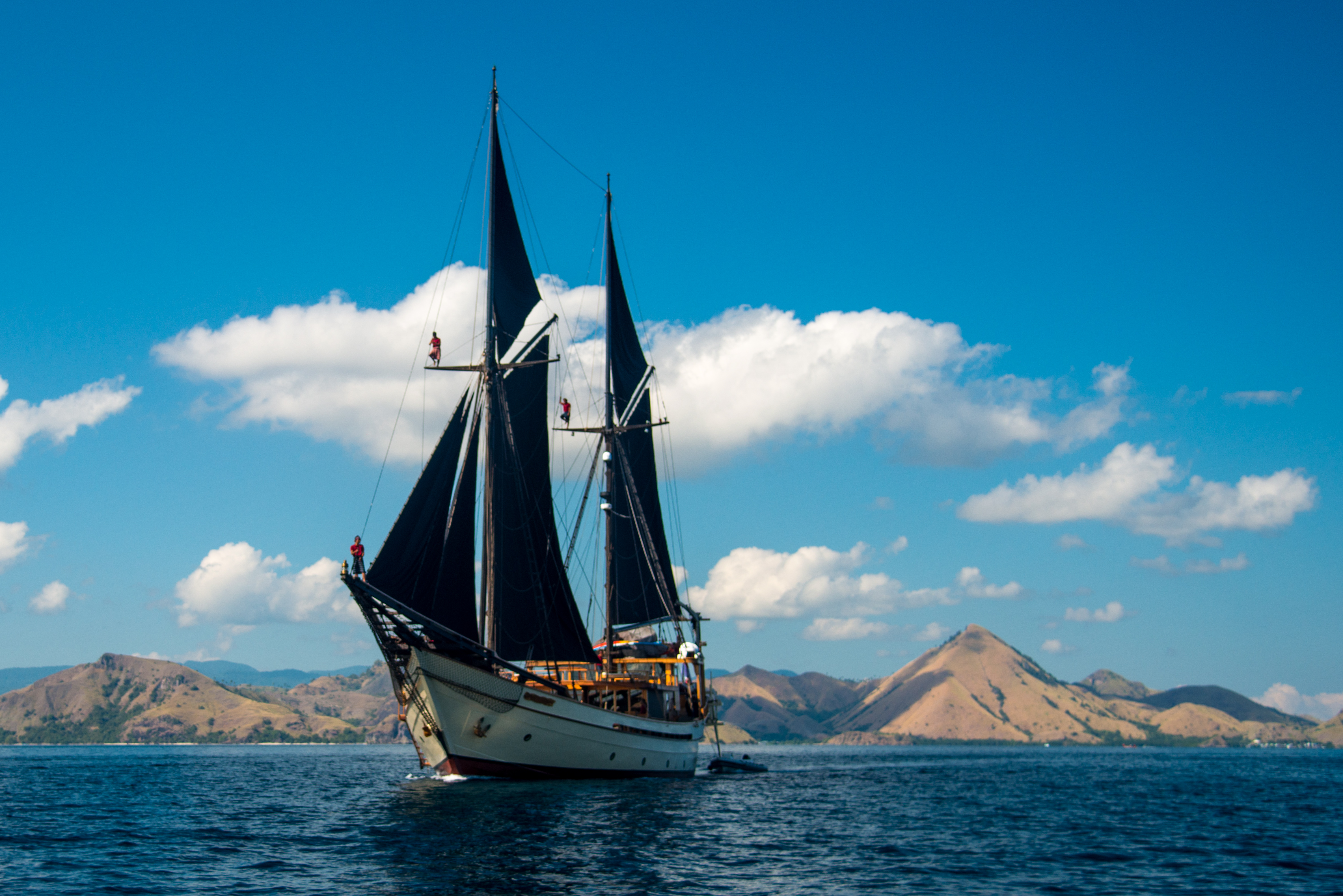
Here, every voyage is a return—to the people who build with faith, to the sea that remembers every name.
Sail with authenticity. Travel with purpose. Discover Silolona Sojourns — where luxury meets living heritage.
References
Rahman, A., et al. (2022). Traditional Maritime Craftsmanship and Ecological Intelligence in South Sulawesi. Journal of Maritime Heritage and Culture.
Tanaka, H. (2021). Embodied Architecture in Sulawesi Boatbuilding. Oceanic Anthropology Review.
Delgado, M. (2020). Ritual Labor and Collective Memory in Southeast Asian Shipbuilding. Ethnographic Studies of Maritime Southeast Asia.


